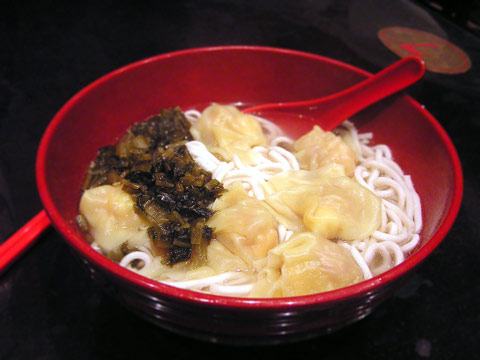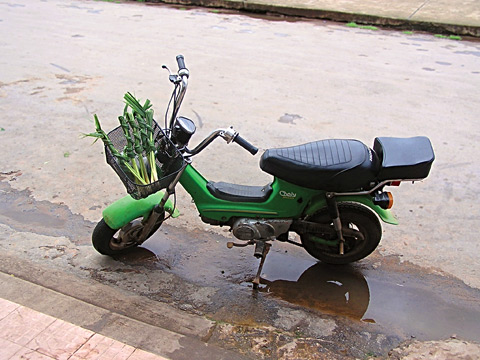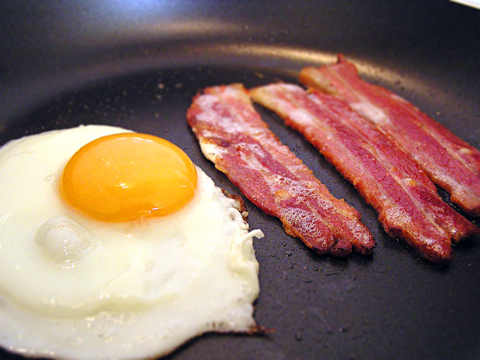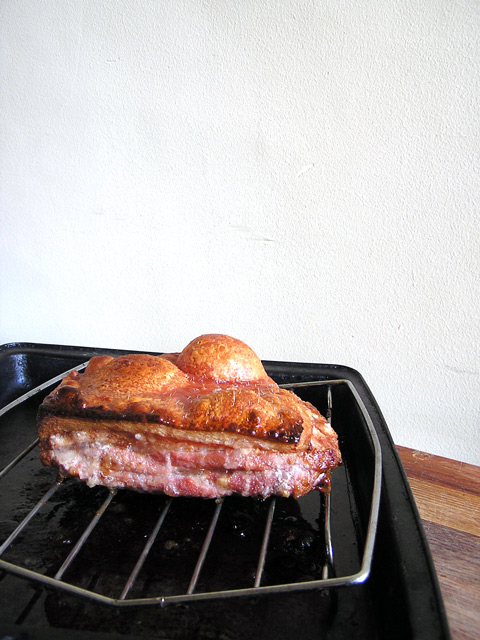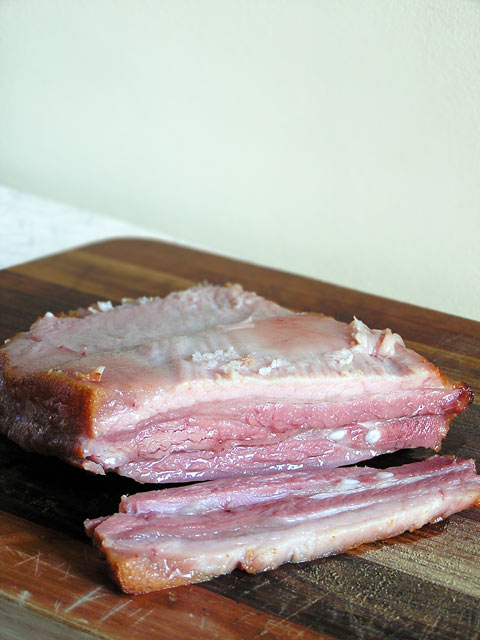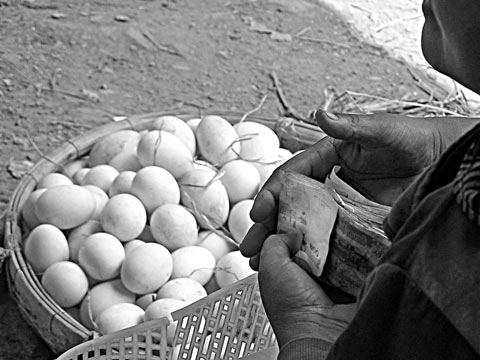
Selling eggs near Russian Market, Phnom Penh, Cambodia
As I mentioned in “How to start a food blog“, food blogging is a terrible way to make money if you enjoy living in the First World. This year, food blogging will pay my rent but not much else. Here is how to do at least that, without devoting your entire life to blogging:
Advertising for your food blog
Which ad network? Or which combination of ad networks?
There is no single ad network that is right for everybody. The most profitable blogs tend to use a mix of networks and play to each of the networks strengths. This list of networks is by no means exhaustive: there are hundreds of ad networks out there.
Google Adsense – Everyone has Google Ads; the number of people getting rich from them apart from Google shareholders is miniscule. Google’s biggest coup is that it has realised that most bloggers are happy to get paid nothing as long as a few dollars trickle through. The advantage of Google is ease of use: they’re dead simple to add to your site, customise in a bare bones fashion and earn a few cents a click. You can use them on every blog network. They’re the ultimate in low maintenance. The disadvantages are the low pay and the complete lack of control over which ads turn up on your site. Because the ads are geographically targeted, the ads that you see won’t be the ones that anyone else sees. This is fine if you don’t care.
Yahoo! – Just like Google but second best!
Text Link Ads – if you want to people to find your website by searching on Google, this network is dead in the water. Google penalises your “page rank” if you use it, but I use it over at Phnomenon because in most of the categories that I write in, I have no competition on the web. It pays very well, doesn’t rely on clicks (so you make money whether people click your ads or not), and if you place them judiciously, people won’t even notice that they’re being advertised at.
A similar network TNX.net has beaten Google for now. They’re still in the early stages of development (as the spelling mistakes on their beta site attests) but worth watching.
Blog Ads – the specialist ad network for bloggers. They’re a handy way to make money when you have low traffic because they pay regardless. The downside of this network is that if you do receive big, unpredictable spikes in the number of people visiting your site, you won’t be getting an equally large spike in earnings. They’re invite-only which is a strategy that I still don’t understand.
Selling other people’s products
When people read your favorite cake recipe, it is unlikely that they’ll click on the ingredients to buy them online. When people read a digital camera review, the opposite is true. Selling other people’s products and making a commission is a popular way to make money for most bloggers but it is difficult for food bloggers to do well because of the nature of the subject. Most of society does not buy the bulk of their food online. The easiest way to sell products is via Amazon affiliates program or the lesser known Chitika (Probloggers swear by it, because unlike Amazon, it relies less on you making sales and more on click-throughs)
or the lesser known Chitika (Probloggers swear by it, because unlike Amazon, it relies less on you making sales and more on click-throughs)
If you want to spend your time writing reviews of products then this is a possible way to make money and there are still a few niches where food bloggers could be making huge amounts of cash: major appliances and kitchenware. Most of the top food bloggers already use Amazon to link to cookbooks but most of the time it is just a half-hearted link rather than a ringing endorsement.
Selling your own ads
Selling your own ads is by far the most profitable way to make money for your blog because it is one of the few avenues by which you’ll firstly be in direct contact with the advertisers’ money and secondly, will be able to charge what your blog is worth. The only downside is that you have to do the selling. As much as I love marketing, marketing is not sales. The low effort way to sell your own ads is to put a banner where your ad would be and link to your rates page. How much should you charge? Here’s blog network Gawker Media’s rates for their network of professionally produced and edited blogs. That will at least give you a point for comparison.
Unconventional means
Merchandise
A few food blogs sell their own merchandise: Chubby Hubby was selling notecards for a time; Ideas in Food sell their photo book; I’m considering turning Phnomenon into a book. If you can find a niche this may be worthwhile.
Make money from every link
I was going to call this bit “monetize your food blog”, but I get a sharp stabbing sensation in the part of my brain that stores verbed nouns every time I write “monetize”. Whenever you can throw in a product link, make sure that you make money from it. For most bloggers, this means the occasional link to an Amazon product, but you’ll notice that practically every link on this page has my referrer code on it. If you sign up for anything then I make money from you! It doesn’t affect your income but I benefit.
Get hired by someone else as a food blogger
This isn’t as hard as you think it might be. B5 Media are always on the lookout for good bloggers. Problogger keeps a handy jobs board: at last check there were two paid food blogger positions. The biggest advantage of making money from your food blog in this way is that (generally) you need not worry about the technical side of the blog or selling ads as the blog network/business will do the design and marketing. The down side is that the pay is terrible and you have no control over design and marketing.
Sell your posts and photos
If you think that your posts and photos are magazine quality, try selling them to magazines. For me, selling a single article to an American newspaper earns just a little less than the income from my two sites for a month. Get over to mediabistro and to your local press to get started. Scoopt started a business selling blog posts to mainstream magazines as ScooptWords (e.g. these food bloggers in Olive Magazine) but have since seemed to have discontinued the blog side of their business to concentrate on cellphone snaps of celebrities.
As for photos, the online stock photo business is well on its way to destroying a valuable income earner for the bad professional photographers who take the photo of the guy climbing the mountain with a briefcase. Good pro photographers will always have a business. To sell your food photos online, see the links below.
Sell out entirely
Get paid to write reviews of other websites at somewhere like ReviewMe. If I no longer valued human decency, I’d make $60 every time that somebody wanted me to review whatever shit that they thrust in my direction.
Where should I place ads to make the most money?
Here.
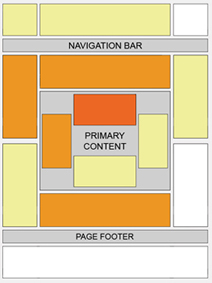
Google published the above heat map to show which ads are clicked the most with the red areas being the most clicked. They have also produced one targeted at blogs which is a little more rudimentary and when I’ve tested it, doesn’t seem to work well.
Also useful are themes for your site designed with making money in mind. See below for links.
The easiest way to make money from blogging is writing about making money from blogging.
Just because I’m making a Third World income from blogging doesn’t mean that you can’t earn more. Read Shoemoney or Problogger. They’re earning 6 figure amounts but they’re also devoting the entirety of their lives to doing it. Sadly, that is the bare minimum amount of time you’ll need to spend.
Maintaining your audience
How often should I write?
As often as you like.
The standard answer to this is that if you are looking to increase your audience, often is better. If you look at Technorati’s top blogs, most of these sites are updated multiple times a day. You’ll also notice that none of them are food blogs, unless you count icanhascheezburger.com which is substantively about cats perverting the English language.
I’d prefer to be reading blogs that update once a month and write 15,000 word articles rather than one that writes two 250 word posts a day. I’m not most people, but nonetheless, I’d encourage you to write for me. What seems to matter as much as frequency is consistency. If you plan to write once a week, stick to your schedule.
I’m burnt out and sick of blogging. What do I do?
Take a break.
What I tend to do is write articles that aren’t time dependent and change their post date to two weeks in advance (you can do this in WordPress). If I have enough content in two weeks time, I push it forward another two weeks. This maintains the appearance that I’m equally motivated all of the time. I’m quite clearly not. The scary thing is that my blog will continue to run for a few months if I’m dead.
People don’t comment. How do you make them?
Ask a question at the end of your post. People are that easy to manipulate…or aren’t they?
Links of note:
Selling your photos online
WordPress themes optimised for making money
Handy “monetizing” links.
